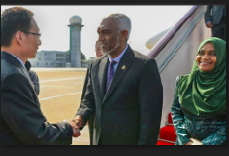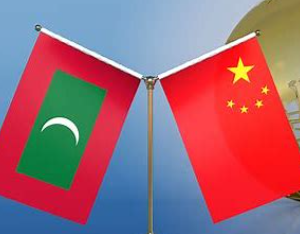In the heart of a diplomatic storm, the Maldives, an idyllic haven of turquoise waters and pristine white beaches, has witnessed a dramatic change in its tourism landscape. China has now dethroned India to become the top source of tourists.
As of February 4, 2024, China, with 23,972 tourists, has claimed the top spot, accounting for 11.2% of the market share. This is a significant leap from their third-place position in 2023.
India, which held the top spot in 2023, has now slid down to the fifth position. As of the same date, 16,536 Indian tourists visited the Maldives, making up 7.7% of the market share.
Diplomatic Tensions and Tourism Trends
Amidst a diplomatic dispute between India and the Maldives, there’s been a notable shift in the tourist demographics visiting the Maldives. As per the latest data from the Maldivian Ministry of Tourism, Chinese tourists have now surpassed Indian visitors to the island nation. This shift could be a consequence of the backlash against the Maldives following derogatory remarks made by three Maldivian ministers against India and its Prime Minister, Narendra Modi. The remarks sparked outrage, leading to calls for a boycott of tourism in the Maldives and a preference for domestic destinations. This has reportedly led to many Indians cancelling their scheduled trips to the Maldives.
The Changing Landscape of Tourist Origins
As of February 4, 2024, China, with 23,972 tourists, has claimed the top spot, accounting for 11.2% of the market share. This is a significant leap from their third-place position in 2023. India, which held the top spot in 2023, has now slid down to the fifth position.
As of the same date, 16,536 Indian tourists visited the Maldives, making up 7.7% of the market share. Other nations also feature in the mix. Russia held the second spot with 21,898 tourists (10.2% market share), maintaining its 2023 ranking. Italy rose to the third position with 21,321 tourists (9.9% market share), while the UK retained its fourth position with 18,078 tourists (8.4% market share).
Political Changes and Their Impact
The political landscape in the Maldives has also seen changes. Muizzu, who took office as the President of the Maldives on November 17, is seen as a pro-China leader. He has formally requested India to withdraw its military personnel from his country. During a visit to Beijing, President Muizzu met with Chinese President Xi Jinping and Premier Li Qiang and discussed ways to boost the number of Chinese tourists to the Maldives, including increasing direct flights between the two countries.
Future Plans for the Tourism Sector
In his inaugural Presidential speech, President Muizzu unveiled an ambitious plan to expand the Maldivian tourism sector. This includes the establishment of 20 new resorts this year, adding 2,800 beds, and completing the development of previously undeveloped resorts. The President also highlighted the government’s efforts to further tourism to the atolls. This includes plans to launch the “Asseyri Tourism” project for Addu City, which will feature a seaplane hub. Projections indicate that this growth trajectory will persist, with an average annual increase of 10.3% in the medium term. This growth is expected to be propelled by the completion of Velana International Airport and the introduction of new flight routes.
Charting the Course for Maldives Tourism
With the current state of affairs, the Maldivian government is turning its gaze towards China to rejuvenate its tourism industry. During his January visit to Beijing, Maldivian President Muizzu had a sit-down with Chinese President Xi Jinping and Premier Li Qiang to brainstorm ways to boost the influx of Chinese tourists. One of the strategies discussed was increasing the number of direct flights between the two nations.
Looking Ahead
The diplomatic tussle and the ensuing shift in the tourism market underscore the intricate interplay between politics and tourism. As the Maldives sails through these choppy waters, it will be intriguing to see how this journey shapes the future of its tourism sector and its ties with India and China.












Comments 1